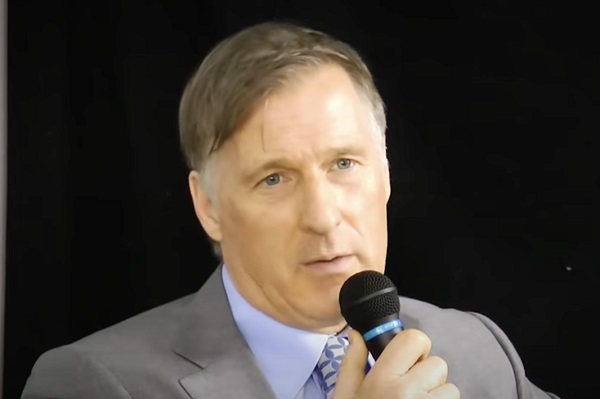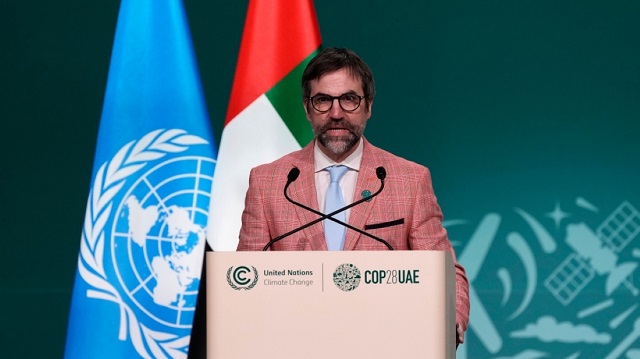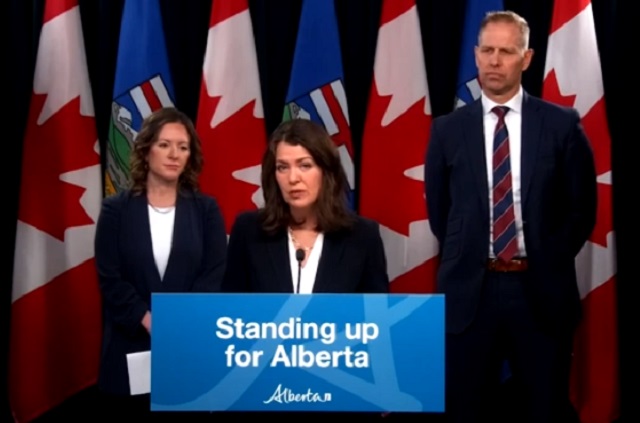Opinion
Feds facing the consequences of the costly carbon tax

From the Canadian Taxpayers Federation
Author: Gage Haubrich
Ottawa unveiled an unorthodox carbon tax communications strategy in Saskatchewan: threats.
Saskatchewan minister responsible for SaskEnergy, Dustin Duncan, recently announced that the Saskatchewan government will not be sending the federal government money to cover its refusal to charge Saskatchewanians the carbon tax on home heating.
In October, Saskatchewan announced that it would stop collecting the federal carbon tax on home heating in the province. The provincial government estimates this will save the average family who uses natural gas to heat their home $400 this year. That’s enough to pay for a couple trips to the grocery store, and with the current prices at the store, families need all the relief they can get.
In response, federal Minister of Energy and Natural Resources Jonathan Wilkinson shot back at Saskatchewan, announcing that because of this decision, Saskatchewanians will no longer be receiving the federal government’s carbon tax rebate.
Premier Scott Moe then pointed out the absurdity of the feds by highlighting that Saskatchewanians are still paying the carbon tax on gas, diesel and propane.
This whole mess started because Prime Minister Justin Trudeau backpedalled on his carbon tax and decided take it off heating oil. It’s a fuel primarily used in Atlantic Canada and used by almost zero Saskatchewanians.
Despite the exemption in Atlantic Canada being very similar to Premier Scott Moe’s plan in Saskatchewan, Atlantic Canadians are still on track to receive carbon tax rebates. And Quebec, which pays a lower carbon tax than the rest of the country, hasn’t faced the wrath of the federal government either.
Ottawa instead decided to pick a fight with Saskatchewan. It’s fight that won’t win them any favours in the province. At this point, it’s a good bet the Winnipeg Blue Bombers are more popular in Saskatchewan than the Liberals.
But not do outdo even himself, Wilkinson also added, “The rebate actually provides more money for most families in Saskatchewan.”
If only that were true.
Currently, the carbon tax costs 14 cents per litre of gasoline and will cost the average Saskatchewan family $410 this year, according to the Parliamentary Budget Officer.
Oh, and that’s including the rebates that Wilkinson is currently threatening to withhold.
Along with the carbon tax, Ottawa also charges a 10 cents per litre federal tax gas tax and then GST on top of the whole price of the gas, including the carbon tax. That means you are paying about two cents per litre in tax-on-tax in GST every time you fill up your vehicle.
And it’s going to get worse because the federal government plans to keep hiking up the carbon tax.
Come April 1, the carbon tax cost jumps to 17 cents per litre. By 2030, it will be 37 cents per litre and cost the average Saskatchewan household $1,723 per year.
And since almost everything we buy is delivered by a truck and then stored inside a store, the costs to transport and sell those items also goes up with the carbon tax.
After the announcement of the carbon tax heating oil exemption, five premiers, including Moe, wrote to Trudeau demanding that he take the carbon tax off all forms of home heating. It’s good to see premiers across the country take a stand, but Moe is the only one taking real action.
Instead of resorting to threats, maybe Ottawa should take the hint and scrap the carbon tax.
Frontier Centre for Public Policy
The tale of two teachers

From the Frontier Centre for Public Policy
By Jim McMurtry
Some have criticized me for stating that the good, as well as the bad, of residential schools should be recognized. I stand by that statement…. Others have criticized me for stating that the Truth and Reconciliation Report was not as balanced as it should be. I stand by that statement as well.
At L.A. Matheson, a high school in Surrey, B.C., a poster in Annie Ohana’s classroom suggests society is too moralistic about sex work, the quote coming from an avowed Satanist. National Post writer Jamie Sarkonak described her classroom in this way: “The walls are covered with Social Justice posters. Some of them sloganeer about ‘decolonization,’ others ‘inflame racial politics.’” Ohana drapes herself in a Pride flag and speaks openly of her pansexuality as well as her subscription to wokeism, identity politics, Social Justice, and DEI.
In March Ohana appeared on CTV after being roundly criticized on X by an Ottawa teacher, Chanel Pfahl, the latter chased out of the profession a few years ago for questioning Critical Race Theory. Ohana said that Pfahl “seems to be making a lot of assumptions that were simply based on misinformation, lies, and in fact, puts myself and other teachers and students and my community in danger.” She also argued she was teaching about “critical thinking” and creating “empowered citizens that can speak up for themselves.” A Canadian flag hangs forlornly in her classroom, atop it is scrawled, “No pride in genocide.”
So far, she has faced no direct consequences for her political position or trying to indoctrinate her students. Indeed, she has won three teaching awards.
I, on the other hand, was walked out of my classroom and career for suggesting the only thing buried in Kamloops was the truth. In the eyes of my employer, I had put students and the community in danger by saying students who died while enrolled at a residential school did so from disease and not murder.
Northrop Frye wrote in The Great Code that the aim is “to see what the subject means, not to accept or reject it.” There is nothing wrong with the teaching of either me or Ohana as long as we are not steering students toward belief. In a 100-page investigation report on my teaching, an assistant superintendent of the Abbotsford School District wrote:
It in my view cannot be overemphasized that Mr. McMurtry having no knowledge of his students and more particularly whether any of these students had Indigenous descent in making his comments that provoked a strong student response and which was contrary to the school’s message of condolences and reconciliation. Regardless of his intent he left students with the impression some or all the deaths could be contributed to ‘natural causes’ and that the deaths could not be called murder or cultural genocide.
My fault was that I didn’t promote a “message of condolences and reconciliation.” Not only was this message never communicated to teachers, the message runs counter to the educational aim of seeing what a subject means. The message is also that the deaths of at least some Indian residential school children were attributable to murder, for which there is still no evidence.
Senator Lynn Beyak was the first prominent Canadian to wade into the increasingly turbulent waters of Indian residential schools. Labelled a racist and facing the prospect of ejection from the Senate, she retired in 2021 from her senate position but not from her convictions.
Some have criticized me for stating that the good, as well as the bad, of residential schools should be recognized. I stand by that statement…. Others have criticized me for stating that the Truth and Reconciliation Report was not as balanced as it should be. I stand by that statement as well.
George Orwell wrote in 1945 in an introduction to Animal Farm, “At any given moment there is an orthodoxy, a body of ideas of which it is assumed that all right-thinking people will accept without question. It is not exactly forbidden to say this, that or the other, but it is ‘not done’ to say it.” Queen’s law professor Bruce Pardy wrote last year: “A new standard of practice is emerging for Canadian professionals: be woke, be quiet, or be accused of professional misconduct.”
Annie Ohana is a better approximation of that mythically average teacher than I. Most teachers appear woke or know enough to be quiet and go along, standing for land acknowledgments, using individualized pronouns with students, speaking of gender identity and sexual orientation, distinguishing students based on race, reading Social Justice books over literary classics, and accepting revisionist history. They go to school wearing the right colour for the occasion: rainbow, pink, orange, red, or black. At staff meetings they are woke and quiet.
I am an avatar of Lynn Beyak, standing outside the orthodoxy and condemned by “all right-thinking people.” Our issue is also the same. Indian residential schools were not the genocidal project that federal members of parliament voted as a genocide on October 27, 2022.
The Truth and Reconciliation Commission, headed by two Indigenous men and a woman married to an Indigenous man, travelled for six years across Canada, and heard from 6000 former students. The Commission’s bias was evident in its final report:
Physical genocide is the mass killing of the members of a targeted group, and biological genocide is the destruction of the group’s reproductive capacity. Cultural genocide is the destruction of those structures and practices that allow the group to continue as a group. States that engage in cultural genocide set out to destroy the political and social institutions of the targeted group. Land is seized, and populations are forcibly transferred and their movement is restricted. Languages are banned. Spiritual leaders are persecuted, spiritual practices are forbidden, and objects of spiritual value are confiscated and destroyed. And, most significantly to the issue at hand, families are disrupted to prevent the transmission of cultural values and identity from one generation to the next. In its dealing with Aboriginal people, Canada did all these things.
What the final report does not mention is:
o the educational value of the schools;
o the alternative was no education at all in remote areas where a day school was not feasible;
o that both Indigenous chiefs and parents saw them as a treaty right and petitioned to keep them open into the sixties;
o that parents had to apply to send their children to residential schools;
o that the mandatory attendance which began in 1920 was to go to school (one-third going to day school, one-third to residential school, and one-third never going to any school);
o that the schools took in orphans and served as a refuge for children and in some cases adults who were abused on the reserve or without the necessities of life; and
o that many former students testified their time there was the happiest in their lives.
My natural allegiance is to fellow teachers, and I don’t doubt that Annie Ohana and others within the Critical Social Justice educational movement teach their students about critical thinking and create empowered citizens that can speak up for themselves. However, such critical thinking should also be directed against the orthodoxy these teachers are imposing on captive groups of students. As well, if their students are indeed empowered citizens, they should come to their own conclusions, no matter the ideological perspective of their teacher.
Jim McMurtry, PhD, was formerly a principal of Neuchâtel Junior College in Switzerland and a college lecturer, but mostly he was a teacher. He lives in Surrey, B.C.
Brownstone Institute
Did Lockdowns Set a Global Revolt in Motion?

From the Brownstone Institute
BY
It does seem like the backlash has empowered populist movements all over the world. We see them in the farmers’ revolt in Europe, the street protests in Brazil against a sketchy election, the widespread discontent in Canada over government policies, and even in migration trends out of US blue states toward red ones.
My first article on the coming backlash – admittedly wildly optimistic – went to print April 24, 2020. After 6 weeks of lockdown, I confidently predicted a political revolt, a movement against masks, a population-wide revulsion against the elites, a demand to reject “social distancing” and streaming-only life, plus widespread disgust at everything and everyone involved.
I was off by four years. I wrongly assumed back then that society was still functioning and that our elites would be responsive to the obvious flop of the whole lockdown scheme. I assumed that people were smarter than they proved to be. I also did not anticipate just how devastating the effects of lockdown would be: in terms of learning loss, economic chaos, cultural shock, and the population-wide demoralization and loss of trust.
The forces that set in motion those grim days were far more deep than I knew at the time. They involved a willing complicity from tech, media, pharma, and the administrative state at all levels of society.
There is every evidence that it was planned to be exactly what it became; not just a foolish deployment of public health powers but a “great reset” of our lives. The newfound powers of the ruling class were not given up so easily, and it took far longer for people to shake off the trauma than I had anticipated.
Is that backlash finally here? If so, it’s about time.
New literature is emerging to document it all.
The new book White Rural Rage: The Threat to American Democracy is a viciously partisan, histrionic, and gravely inaccurate account that gets nearly everything wrong but one: vast swaths of the public are fed up, not with democracy but its opposite of ruling class hegemony. The revolt is not racial and not geographically determined. It’s not even about left and right, categories that are mostly a distraction. it’s class-based in large part but more precisely about the rulers vs. the ruled.
With more precision, new voices are emerging among people who detect a “vibe change” in the population. One is Elizabeth Nickson’s article “Strongholds Falling; Populists Seize the Culture.” She argues, quoting Bret Weinstein, that “The lessons of [C]ovid are profound. The most important lesson of Covid is that without knowing the game, we outfoxed them and their narrative collapsed…The revolution is happening all over the socials, especially in videos. And the disgust is palpable.”
A second article is “Vibe Shift” by Santiago Pliego:
The Vibe Shift I’m talking about is the speaking of previously unspeakable truths, the noticing of previously suppressed facts. I’m talking about the give you feel when the walls of Propaganda and Bureaucracy start to move as you push; the very visible dust kicked up in the air as Experts and Fact Checkers scramble to hold on to decaying institutions; the cautious but electric rush of energy when dictatorial edifices designed to stifle innovation, enterprise, and thought are exposed or toppled. Fundamentally, the Vibe Shift is a return to—a championing of—Reality, a rejection of the bureaucratic, the cowardly, the guilt-driven; a return to greatness, courage, and joyous ambition.
We truly want to believe this is true. And this much is certainly correct: the battle lines are incredibly clear these days. The media that uncritically echo the deep-state line are known: Slate, Wired, Rolling Stone, Mother Jones, New Republic, New Yorker, and so on, to say nothing of the New York Times. What used to be politically partisan venues with certain predictable biases are now more readily described as ruling-class mouthpieces, forever instructing you precisely how to think while demonizing disagreement.
After all, all of these venues, in addition to the obvious case of the science journals, are still defending the lockdowns and everything that followed. Rather than express regret for their bad models and immoral means of control, they have continued to insist that they did the right thing, regardless of the civilization-wide carnage everywhere in evidence, while ignoring the relationship between the policies they championed and the terrible results.
Instead of allowing their mistakes to change their own outlook, they have adapted their own worldview to allow for snap lockdowns anytime they deem them necessary. In holding this view, they have forged a view of politics that it is embarrassingly acquiescent to the powerful.
The liberalism that once questioned authority and demanded free speech seems extinct. This transmogrified and captured liberalism now demands compliance with authority and calls for further restrictions on free speech. Now anyone who makes a basic demand for normal freedom – to speak or choose one’s own medical treatment or to decline to wear a mask – can reliably anticipate being denounced as “right-wing” even when it makes absolutely no sense.
The smears, cancellations, and denunciations are out of control, and so unbearably predictable.
It’s enough to make one’s head spin. As for the pandemic protocols themselves, there have been no apologies but only more insistence that they were imposed with the best of intentions and mostly correct. The World Health Organization wants more power, and so does the Centers for Disease Control and Prevention. Even though the evidence of the failure of pharma pours in daily, major media venues pretend that all is well, and thereby out themselves as mouthpieces for the ruling regime.
The issue is that major and unbearably obvious failures have never been admitted. Institutions and individuals who only double down on preposterous lies that everyone knows are lies only end up discrediting themselves.
That’s a pretty good summary of where we are today, with vast swaths of elite culture facing an unprecedented loss of trust. Elites have chosen the lie over truth and cover-up over transparency.
This is becoming operationalized in declining traffic for legacy media, which is shedding costly staff as fast as possible. The social media venues that cooperated closely with government during the lockdowns are losing cultural sway while uncensored ones like Elon Musk’s X are gaining attention. Disney is reeling from its partisanship, while states are passing new laws against WHO policies and interventions.
Sometimes this whole revolt can be quite entertaining. When the CDC or WHO posts an update on X, when they allow comments, it is followed by thousands of reader comments of denunciation and poking fun, with flurries of comments to the effect of “I will not comply.”
DEI is being systematically defunded by major corporations while financial institutions are turning on it. Indeed, the culture in general has come to regard DEI as a sure indication of incompetence. Meanwhile, the outer reaches of the “great reset” such as the hope that EVs would replace internal combustion have come to naught as the EV market has collapsed, along with consumer demand for fake meat to say nothing of bug eating.
As for politics, yes, it does seem like the backlash has empowered populist movements all over the world. We see them in the farmers’ revolt in Europe, the street protests in Brazil against a sketchy election, the widespread discontent in Canada over government policies, and even in migration trends out of US blue states toward red ones. Already, the administrative state in D.C. is working to secure itself against a possible unfriendly president in the form of Trump or RFK, Jr.
So, yes, there are many signs of revolt. These are all very encouraging.
What does all this mean in practice? How does this end? How precisely does a revolt take shape in an industrialized democracy? What is the mostly likely pathway for long-term social change? These are legitimate questions.
For hundreds of years, our best political philosophers have opined that no system can function in a sustainable way in which a huge majority is coercively governed by a tiny elite with a class interest in serving themselves at public expense.
That seems correct. In the days of the Occupy Wall Street movement of 15 years ago, the street protesters spoke of the 1 percent vs. the 99 percent. They were speaking of those with the money inside the traders’ buildings as opposed to the people on the streets and everywhere else.
Even if that movement misidentified the full nature of the problem, the intuition into which it tapped spoke to a truth. Such a disproportionate distribution of power and wealth is dangerously unsustainable. Revolution of some sort threatens. The mystery right now is what form this takes. It’s unknown because we’ve never been here before.
There is no real historical record of a highly developed society ostensibly living under a civilized code of law that experiences an upheaval of the type that would be required to unseat the rulers of all the commanding heights. We’ve seen political reform movements that take place from the top down but not really anything that approximates a genuine bottom-up revolution of the sort that is shaping up right now.
We know, or think we know, how it all transpires in a tinpot dictatorship or a socialist society of the old Soviet bloc. The government loses all legitimacy, the military flips loyalties, there is a popular revolt that boils over, and the leaders of the government flee. Or they simply lose their jobs and take up new positions in civilian life. These revolutions can be violent or peaceful but the end result is the same. One regime replaces another.
It’s hard to know how this translates to a society that is heavily modernized and seen as non-totalitarian and even existing under the rule of law, more or less. How does revolution occur in this case? How does the regime come around to adapting itself to a public revolt against governance as we know it in the US, UK, and Europe?
Yes, there is the vote, if we can trust that. But even here, there are the candidates, which are that for a reason. They specialize in politics, which does not necessarily mean doing the right thing or reflecting the aspirations of the voters behind them. They are responsive to their donors first, as we have long discovered. Public opinion can matter but there is no mechanism that guarantees a smoothly responsive pathway from popular attitudes to political outcomes.
There is also the pathway of industrial change, a migration of resources out of legacy venues to new ones. Indeed, in the marketplace of ideas, the amplifiers of regime propaganda are failing but we also observe the response: widened censorship. What’s happening in Brazil with the full criminalization of free speech can easily happen in the US.
In social media, were it not for Elon’s takeover of Twitter, it’s hard to know where we would be. We have no large platform in which to influence the culture more broadly. And yet the attacks on that platform and other enterprises owned by Musk are growing. This is emblematic of a much more robust upheaval taking place, one that suggests change is on the way.
But how long does such a paradigm shift take? Thomas Kuhn’s The Structure of Scientific Revolutions is a bracing account of how one orthodoxy migrates to another not by the ebb and flow of proof and evidence but through dramatic paradigm shifts. An abundance of anomalies can wholly discredit a current praxis but that doesn’t make it go away. Ego and institutional inertia perpetuate the problem until its most prominent exponents retire and die and a new elite replaces them with different ideas.
In this model, we can expect that a failed innovation in science, politics, or technology could last as long as 70 years before finally being displaced, which is roughly how long the Soviet experiment lasted. That’s a depressing thought. If this is true, we still have another 60 plus years of rule by the management professionals who enacted lockdowns, closures, shot mandates, population propaganda, and censorship.
And yet, people say that history is moving faster now than in the past. If a future of freedom is ours just lying in wait, we need that future here sooner rather than later, before it is too late to do anything about it.
The slogan became popular about ten years ago: the revolution will be decentralized with the creation of robust parallel institutions. There is no other path. The intellectual parlor game is over. This is a real-life struggle for freedom itself. It’s resist and rebuild or doom.
-

 COVID-192 hours ago
COVID-192 hours agoJapanese study finds ‘significant increases’ in cancer deaths after third mRNA COVID doses
-

 Business15 mins ago
Business15 mins agoMaxime Bernier warns Canadians of Trudeau’s plan to implement WEF global tax regime
-

 Frontier Centre for Public Policy1 hour ago
Frontier Centre for Public Policy1 hour agoThe tale of two teachers
-

 Business2 days ago
Business2 days agoDon’t be fooled by high-speed rail
-

 Alberta2 days ago
Alberta2 days agoAlberta rejects unconstitutional cap on plastic production
-

 Addictions2 days ago
Addictions2 days agoBritish Columbia should allow addicts to possess even more drugs, federal report suggests
-

 Business2 days ago
Business2 days agoUN plastics plans are unscientific and unrealistic
-

 Censorship Industrial Complex2 days ago
Censorship Industrial Complex2 days agoAustralian politicians attack Elon Musk for refusing to remove video of Orthodox bishop’s stabbing




